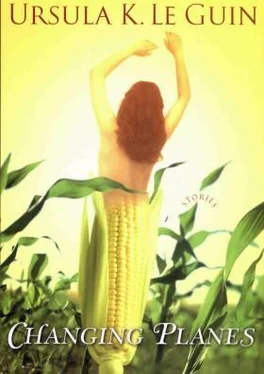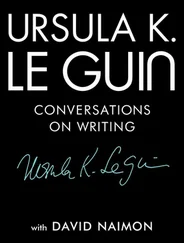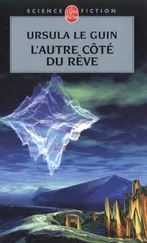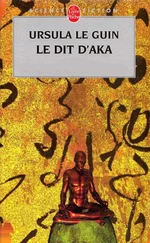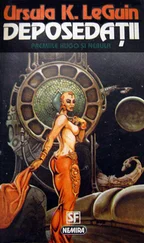The asomnics bask, walk, run, climb, swing, wrestle, groom themselves and one another, hold and suckle babies, and have sex. Males fight in sexual rivalry and often beat females who reject intercourse. All fight occasionally over food, and there have been a number of apparently causeless killings. Group rape is common, when males are excited by seeing others copulate. There are some indications of affectional bonding between mother and infant and between siblings. Otherwise there are no social relations. No teaching occurs, and there is no sign of individuals learning skills or customs by imitation.
Most of the females bear a child a year from the age of thirteen or fourteen on. Their maternal skills can only be innate, and the question of whether human beings have any innate skills has not yet been settled; in any case, most of the babies die. The mothers leave dead babies where they lie. After weaning, children fend for themselves; since an excess of food is always provided, a fair number of them survive to puberty.
Adult female death is usually from brutality or complications of childbirth. Female asomnics seldom reach thirty years. Males live longer, if they survive the dangerous late teens and early twenties when fighting is all but constant. The longest-lived inhabitant of Wake Island, FB-204, nicknamed Fibby by the observer team, was a female who lived to seventy-one. Fibby bore one infant at age fourteen and was apparently sterile thereafter. She never rejected a male’s effort to copulate and so was seldom beaten. She was shy and very lazy, rarely appearing on the beach except to pick up food and retreat into the trees with it.
The current patriarch is a grizzled male, MTT-311, fifty-six years old, muscular and well-made. He spends most days basking on the sand beaches, and at night roams endlessly through the forests of the interior. Sometimes he digs holes and ditches with his hands, or piles up rocks to dam a creek, apparently for the physical pleasure of doing so, as the dams serve no purpose and are never made watertight enough to divert the stream. One of the young females spends a part of almost every night building up piles of torn bark and leaves like huge nests, though she never uses them for anything. Several females hunt for ants or grubs in fallen trees and eat them one by one. These are the only observed evidences of purposive behavior beyond the fulfillment of immediate physical needs.
Though they are extremely unclean and the females age quickly, most asomnics are handsome in youth. All observers comment on their expression, described as bland, serene, su-pernally calm. A recent book about the asomnics was entitled “The Happy People”—with the Orichi equivalent of a question mark.
Orichi thinkers continue to argue about them. Are you happy if you aren’t conscious of being happy? What is consciousness? Is consciousness the great boon we consider it? Which is better off, a lizard basking in the sun or a philosopher? Better off in what way and for what? There have been lizards far longer than there have been philosophers. Lizards do not bathe, do not bury their dead, and do not perform scientific experiments. There have been many more lizards than philosophers. Are lizards, then, a more successful species than philosophers? Does God love lizards better than he loves philosophers?
However one may decide such questions, observation of the asomnics, or of lizards, seems to indicate that consciousness is not necessary to living a contented sentient life. Indeed, when carried to such an extreme as human beings have carried it, consciousness may prevent true contentment: the worm in the apple of happiness. Does consciousness of being interfere with being—pervert, stunt, cripple it? It seems that every mystical practice on every plane seeks precisely to escape from consciousness. If Nirvana is the mind freed of itself, allowed to rejoin the body in the body’s pure oneness with its world or god, have not the asomnics achieved Nirvana?
Certainly consciousness comes at a high cost. The price of it, evidently, is the third of our lives we spend blind, deaf, dumb, helpless, and mindless—asleep. We do, however, dream.
The poem “Wake Island,” by Nu Lap, portrays the asomnics as spending their whole life “in a dream of dreams…” Dreams of waters flowing always by the sandbars dreams of bodies meeting, opening like deep flowers, dreams of eyes forever open to the sun and stars…
A moving poem, it offers one of the very few positive views of the asomnics. But the scientists of Hy Brisal, though they might like to agree with the poet to ease their collective conscience, assert that asomnics do not and cannot dream.
As on our plane, only certain animals, including birds, dogs, cats, horses, apes, and humans, regularly enter the peculiar and highly specific brain)body condition known as sleep. Once there, and only there, some of them enter the even more peculiar state or activity, characterised by highly specific brainwave types and frequencies, called dreaming.
The asomnics lack these states of being. Their brains do not do this. They are like reptiles, who chill down into inertia but do not sleep.
A Hy Brisalian philosopher, To Had, elaborates these paradoxes: To be a self, one must also be nothing. To know oneself, one must be able to know nothing. The asomnics know the world continuously and immediately, with no empty time, no room for selfhood. Having no dreams, they tell no stories and so have no use for language. Without language, they have no lies. Thus they have no future. They live here, now, perfectly in touch. They live in pure fact. But they can’t live in truth, because the way to truth, says the philosopher, is through lies and dreams.
THE “GARDEN UTOPIA” of the Nna Mmoy deservedly enjoys the reputation of being absolutely safe—“an ideal plane for children and elderly people.” The few visitors who come, including children and the aged, usually find it very dull and leave as soon as possible.
The scenery is all the same everywhere—hills, fields, park-lands, woods, villages: a fertile, pretty, seasonless monotony. Cultivated land and wilderness look exactly alike. The few species of plants are all useful, yielding food or wood or fabric. There is no animal life except bacteria, some creatures resembling jellyfish in the oceans, two species of useful insect, and the Nna Mmoy.
Their manners are pleasant, but nobody has yet succeeded in talking with them.
Though their monosyllabic language is melodious to the ear, the translatomat has so much trouble with it that it cannot be relied upon even for the simplest conversation.
A look at the written language may yield some light on the problem. Written Nna Mmoy is a syllabary: each of its several thousand characters represents a syllable. Each syllable is a word, but a word with no fixed, specific meaning, only a range of possible significances determined by the syllables that come before, after, or near it. A word in Nna Mmoy has no denotation, but is a nucleus of potential connotations which may be activated, or created, by its context. Thus it would be possible to make a dictionary of Nna Mmoy only if the number of possible sentences were finite.
Texts written in Nna Mmoy are not linear, either horizontally or vertically, but radial, budding out in all directions, like tree branches or growing crystals, from a first or central word which, once the text is complete, may well be neither the center nor the beginning of the statement. Literary texts carry this polydirectional complexity to such an extreme that they resemble mazes, roses, artichokes, sunflowers, fractal patterns.
Whatever language we speak, before we begin a sentence we have an almost infinite choice of words to use. A, The, They, Whereas, Having, Then, To, Bison, Ignorant, Since, Winnemucca, In, It, As … Any word of the immense vocabulary of English may begin an English sentence. As we speak or write the sentence, each word influences the choice of the next—its syntactical function as noun, verb, adjective, etc., its person and number if a pronoun, its tense and number as a verb, etc., etc. And as the sentence goes on, the choices narrow, until the last word may very likely be the only one we can use. (Though a phrase, not a sentence, this quotation nicely exemplifies the point: To be or not to—.)
Читать дальше
